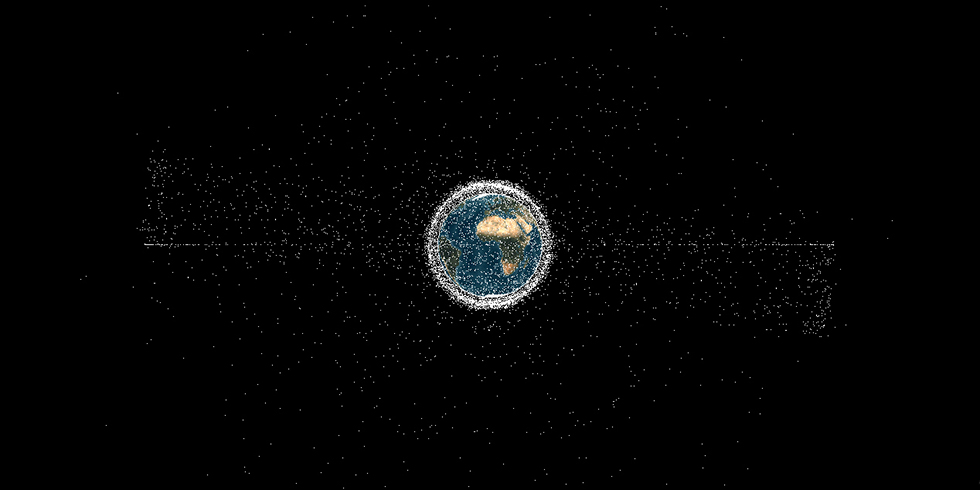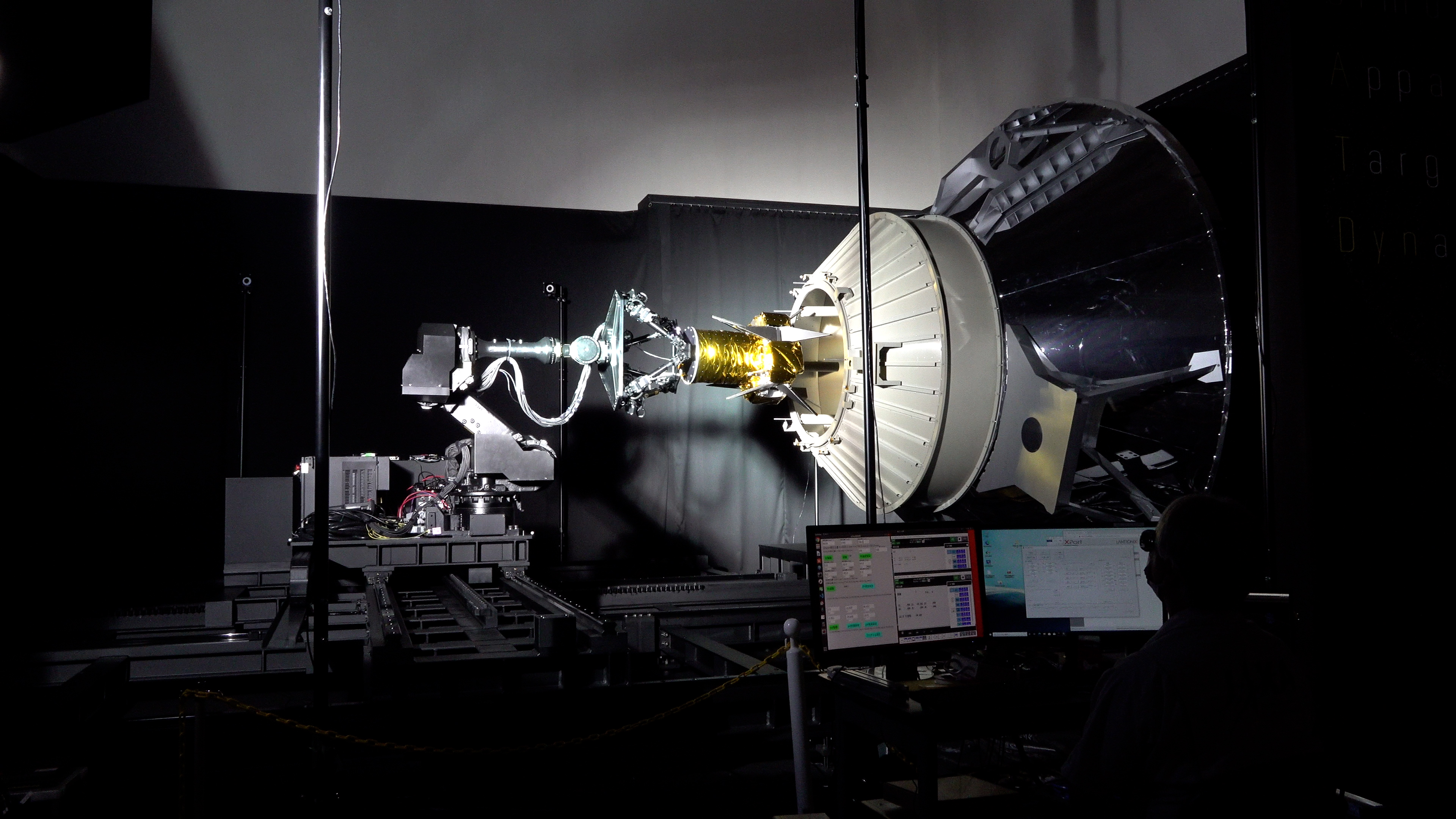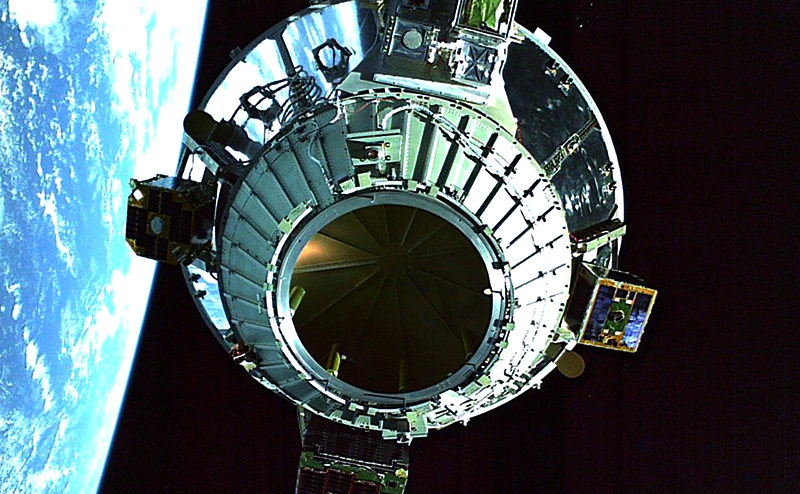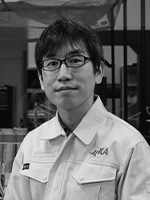
Research and Development Directorate

CG image of Commercial Removal of Debris Demonstration (CRD2) Phase I ©Astroscale
Taking on the Challenge of Developing Unproven Technologies
Space Debris Removal Project Underway
An increasing number of unwanted man-made objects - space debris - are now circling the Earth as a result
of progressing space exploration.
To resolve this problem, the Research and Development Directorate is currently working on a project to
remove space debris.
Team leader YAMAMOTO Toru spoke to us about the Commercial Removal of Debris Demonstration (CRD2) project,
a collaborative effort with private companies that is seeking to create technologies never yet
successfully developed by anyone.
Why is the increase in space debris a problem?
Space debris comprises unwanted man-made objects circling the Earth. These include debris such as terminated or failed satellites, upper stages of launch vehicles, parts ejected during mission execution, and debris generated by explosions or collisions.

So why is growing space debris considered a problem?
“This mounting volume of space debris could hit and damage satellites operating in space, so satellites are forced to avoid collisions as they operate and safe space activities are hindered. It is even possible that we could someday find it difficult to engage in any space activity whatsoever. This is why we need space debris control.”
There are several ways to solve this problem, among them being observation, modeling and prediction of space debris environment and de-orbiting satellites after they have completed operations to reduce the probability of collision or changing their orbits to avoid collisions, but the tasks that Yamamoto and his colleagues have set for themselves are capturing and removing space debris using a dedicated satellite.
“This effort to remove large debris in cooperation with private companies has been given the name 'Commercial Removal of Debris Demonstration (CRD2)'. The technology to remove debris in orbit has not been established anywhere in the world, and it presents a tough challenge that no one has yet successfully met.”
Partnering with private companies with the aim of removing space debris
Yamamoto described the ongoing CRD2 as follows.
“CRD2 is implemented in a two-phase approach. The objective of Phase I is to take images. We will launch a satellite to approach the target space debris and acquire images showing its motion, damage, and degradation. Phase II will demonstrate the capture and removal of space debris. A satellite will be launched to approach the space debris and rendezvous with it (match its speed to approach and then dock with it, etc.) before capturing and removing it.
However, the targeted space debris is different from the International Space Station and operational satellites. We don't have precise knowledge of its exact movement or surface condition, and we can't communicate with it. There is no docking mechanism, of course, nor is it known exactly how damaged the debris will be. To capture this kind of space debris, we have to use not only advanced observation technologies but many other technologies such as intensive numerical simulations and non-cooperative rendezvous-capture as well.”
CRD2 is collaborating with private companies to create a pathway for Japanese companies to play an active role in the space business through the removal of space debris. The Phase I partner company selected through a Request for Proposals (RFP) is Astroscale, a space venture company established in 2015 that has been dynamically addressing space debris issues for sustainable space development.
“In CRD2 Phase I, Astroscale developed a demonstration satellite for space debris observation, and JAXA provided technical advices, test facilities, and intellectual property for the research results. We have faced many development issues in taking on this new challenge, but we are moving ahead with the project while leveraging ideas distinctive to private companies alongside JAXA's own technology.”

Making Phase I a success to take the project a step further
CRD2 is currently in the most interesting part of Phase I. ADRAS-J, a satellite for space debris observation, is almost complete and various tests are underway in preparation for launch.
In the Phase I plan to acquire images, ADRAS-J will reach the target space debris after launch, approach the debris from behind, adjust its position and speed to match those of the debris, and carry out fixed-point and fly-around observations.

Mission mark of the CRD2 Phase I project featuring a motif of a broom cleaning up space for the future
“The envisioned target is the upper stage of a rocket previously launched by Japan. We selected this target because it is a large piece of space debris and there are many similarly shaped (cylindrical) pieces on the list. If we are successful, we expect to be able to apply these techniques to the removal of similarly-shaped space debris.

Once CRD2 has established the means for removing space debris, the technologies involved will undoubtedly be put to good use throughout the space industry. For example, the technologies for performing detailed tasks in space required for debris removal will contribute to the development of robotics technologies, and it may even be possible in future to create robots that can repair satellites in orbit or resupply satellites with fuel (propellant).”
Since a satellite's life can be limited by its fuel (propellant), such technologies could extend its life and enable space activities to be continued more economically.
“Phase I is now in the homestretch, and I myself am very much looking forward to the moment we will be able to see images of the target space debris. I want to achieve success here so we can move on from Phase I to Phase II. I also hope to help create a new space industry by putting in place methods for removing debris from space ahead of the rest of the world.”
Profile

|
|
|---|
All the images are copyrighted ©JAXA unless otherwise noticed.
- Home>
- Global Activity>
- Public Relations>
- JAXA’s>
- JAXA's No.92>
- Space Debris Removal Project Underway, Taking on the Challenge of Developing Unproven Technologies